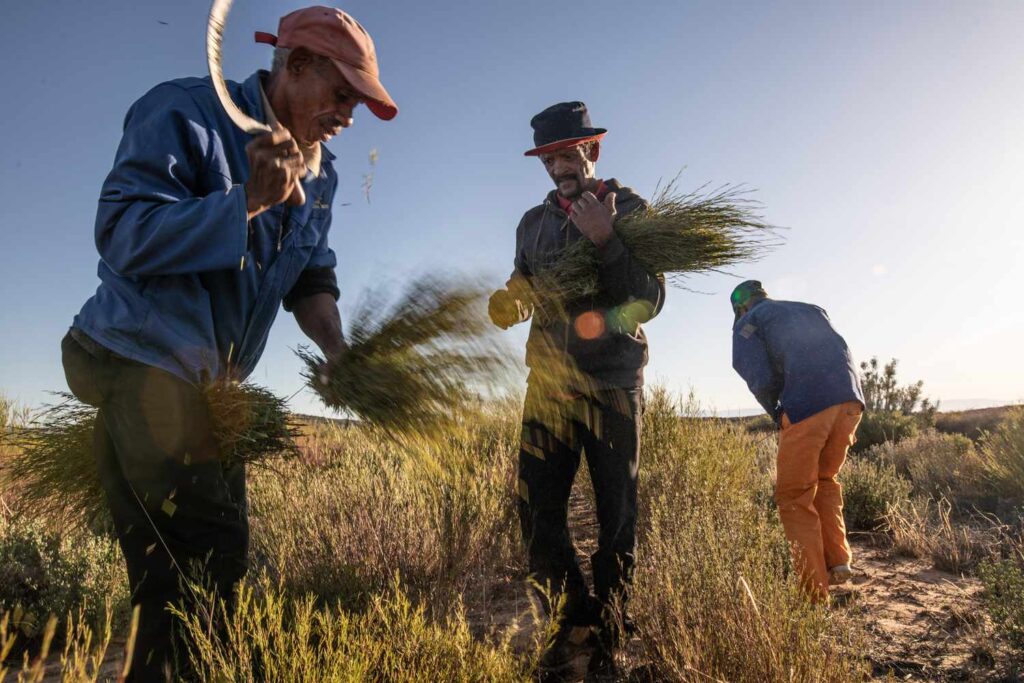Nestled within the breathtaking Cederberg Mountains of South Africa lies a true treasure—Rooibos. This indigenous red bush, grown exclusively in this region, has captivated hearts worldwide for its rich flavor, remarkable health benefits, and deep cultural heritage. My recent journey along the celebrated Rooibos Route revealed the extraordinary story of how this humble plant connects history, science, and community in profoundly meaningful ways.

Rooibos has roots that reach back thousands of years, originating with the Indigenous San people, who first unlocked the plant’s medicinal properties. Their knowledge, preserved through oral tradition, is echoed in the striking rock art of the Cederberg region, which spans as far back as 10,000 years. While exploring the renowned Bushmans Kloof Wilderness Reserve, guide Byron Hartung explained how this ancient artwork serves not only as a fascinating glimpse into the San culture but also as a bridge between their spiritual legacy and modern life.
Fast forward to today, and Rooibos remains South Africa’s pride, earning international acclaim. In 2021, it became the first African product to gain “protected designation of origin” status, joining the ranks of iconic goods such as Champagne and Parma ham. This status safeguards Rooibos’ authenticity while cementing South Africa’s place as its exclusive home. In a landmark agreement signed a year later, Indigenous South African communities were formally recognized as the traditional knowledge holders of Rooibos. Through this agreement, 1.5% of all raw Rooibos sales are allocated to these communities—a small but significant step toward addressing historical injustices and supporting cultural preservation.
Driving along the N7 highway, I embarked on the Rooibos Route, a thoughtfully designed itinerary that takes visitors into the heart of Rooibos production and tradition. My first stop was the Wupperthal Original Rooibos Cooperative, a dynamic community of over 70 Indigenous farmers nestled in the dramatic Tra-Tra Valley. While walking through the sunlit fields, I met Edgar Valentyn, a fifth-generation farmer whose love for Rooibos runs deep. “For us, Rooibos isn’t just tea,” Edgar said with heartfelt conviction. “It’s our heritage, our livelihood, and our way of life.”
A visit to the Clanwilliam Ou Tronk Museum offered a fascinating glimpse into the historical journey of Rooibos, from its humble beginnings as a medicinal herb to its contemporary status as a global sensation. Of particular interest was a tribute to Benjamin Ginsberg, the Russian immigrant who, in the early 20th century, pioneered methods to help Rooibos reach international markets.
Onward to Skimmelberg Farm, I witnessed the intricate steps of fermenting and drying Rooibos—where science works hand in hand with tradition. Surrounded by rolling hills painted in hues of red and green, I shared the experience with mesmerized visitors from as far as Scandinavia. My final stop brought me to the Carmién Tea Shop, where a warm Rooibos latte in hand allowed me to reflect. As sales manager Liezel van der Merwe aptly put it, “Rooibos is more than just a cup of tea. It carries hope, resilience, and the spirit of connection in every sip.”

Beyond its rich aroma and flavor, Rooibos boasts an impressive versatility. It’s a star ingredient in everything from milkshakes to martinis, steak marinades, and even skincare treatments like spa exfoliants. Its proven health benefits—ranging from aiding heart health to assisting with blood sugar regulation—make it a beacon of wellness, especially for health-conscious audiences across the globe.
Economically, Rooibos has become an engine of regional growth, empowering local farmers and small businesses. The tourism it inspires, with visitors flocking to the Cederberg Mountains to explore its origin, sparks cultural exchange and strengthens community ties. Even the world of fashion has embraced Rooibos, with shades like “Rooibos Tea” making waves in color trends.
Rooibos is much more than an herbal tea—it’s a living symbol of resilience, unity, and cultural pride. For individuals like Edgar Valentyn and his community, it represents a steadfast connection to ancestral traditions now recognized on the global stage. It is a bridge that unites ancient wisdom with modern opportunity, transforming a humble plant into an emblem of hope.
As I sip my final cup from this unforgettable journey, the earthy, vibrant flavor of Rooibos feels almost magical. It carries the spirit of the Cederberg Mountains, the legacy of the San people, and the collective dreams of the farmers who cultivate it. This South African treasure is not just a gift to the world—it is a reminder of how history, perseverance, and community can weave together into something truly extraordinary.







